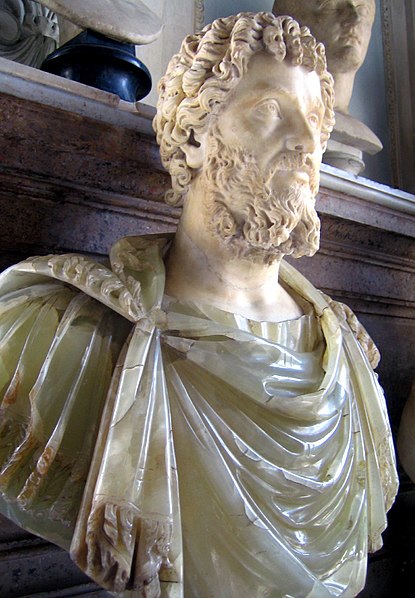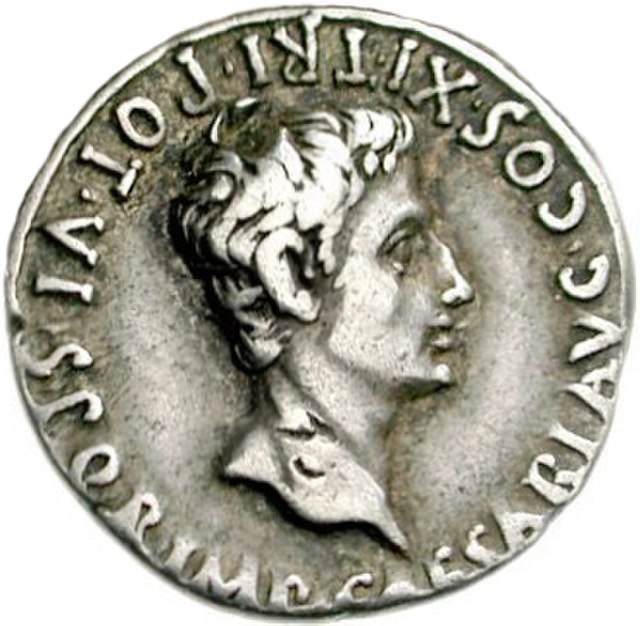Lucius Septimius Severus was a Roman politician who served as emperor from 193 to 211. He was born in Leptis Magna in the Roman province of Africa. As a young man he advanced through the customary succession of offices under the reigns of Marcus Aurelius and Commodus. Severus was the final contender to seize power after the death of the emperor Pertinax in 193 during the Year of the Five Emperors.
Roman alabaster and marble bust of Septimius Severus, Musei Capitolini, Rome
Dynastic aureus of Septimius Severus, minted in 202. The reverse feature the portraits of Geta (right), Julia Domna (centre) and Caracalla (left). Inscription: SEVER[US] P[IUS] AVG[USTUS] P[ONTIFEX] M[AXIMUS], TR[IBUNUS] P[LEBIS] X, CO[N]S[UL] III / FELICITAS SAECVLI.
The Severan Tondo, c. 199, Severus, Julia Domna, Caracalla and Geta, whose face is erased (Antikensammlung Berlin)
Roman marble bust of Septimius Severus, early 3rd century AD, Altes Museum
The Roman emperor was the ruler and monarchical head of state of the Roman Empire, starting with the granting of the title augustus to Octavian in 27 BC. The term "emperor" is a modern convention, and did not exist as such during the Empire. Often when a given Roman is described as becoming emperor in English, it reflects his taking of the title augustus and later basileus. Another title used was imperator, originally a military honorific, and caesar, originally a surname. Early emperors also used the title princeps alongside other Republican titles, notably consul and pontifex maximus.
Bust of Augustus wearing the corona civica
Augustus depicted as a magistrate at the Ny Carlsberg Glyptotek
Cameo of Augustus in a quadriga drawn by tritons at the Kunsthistorisches Museum, Vienna
Denarius of Augustus (18 BC).








